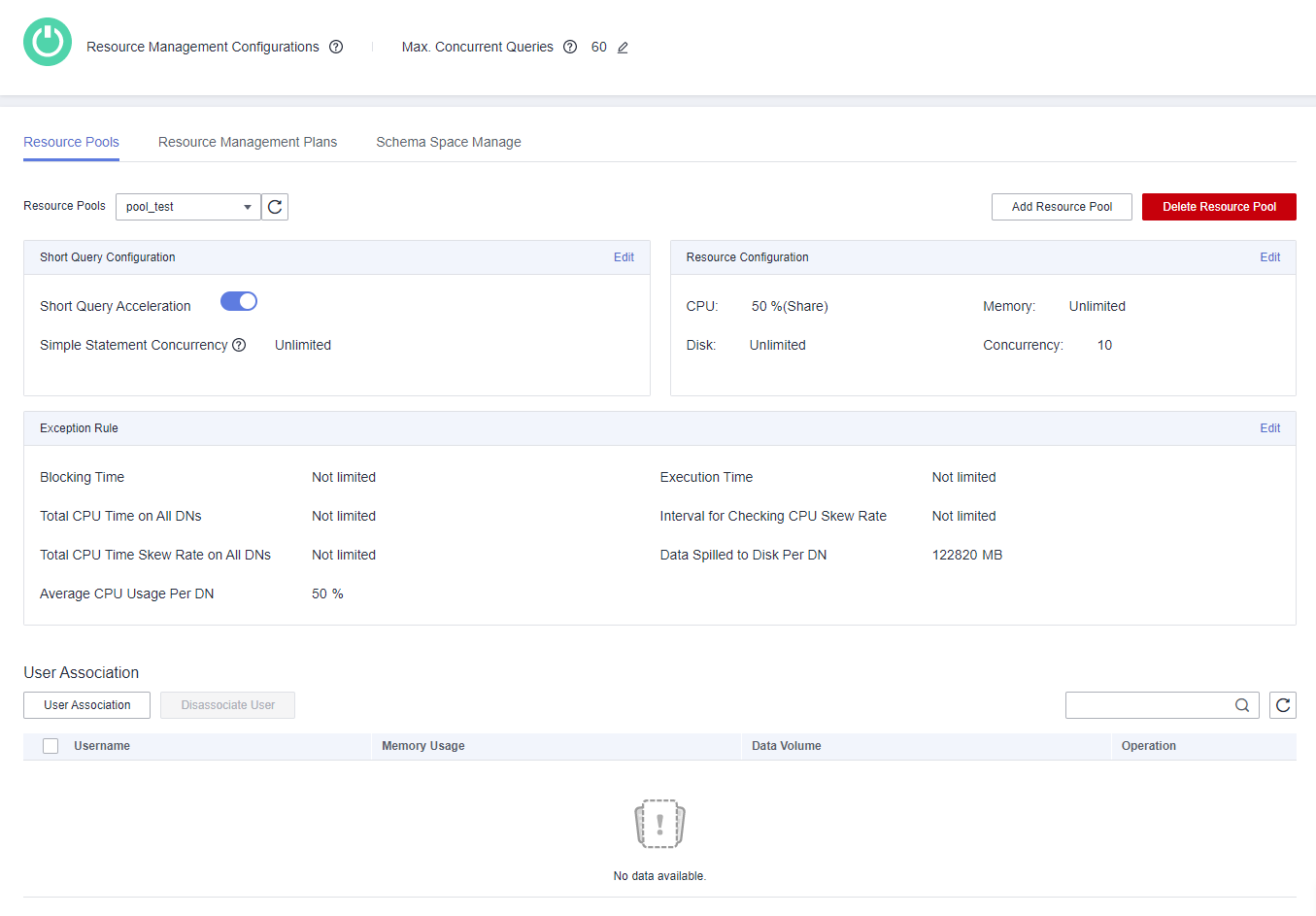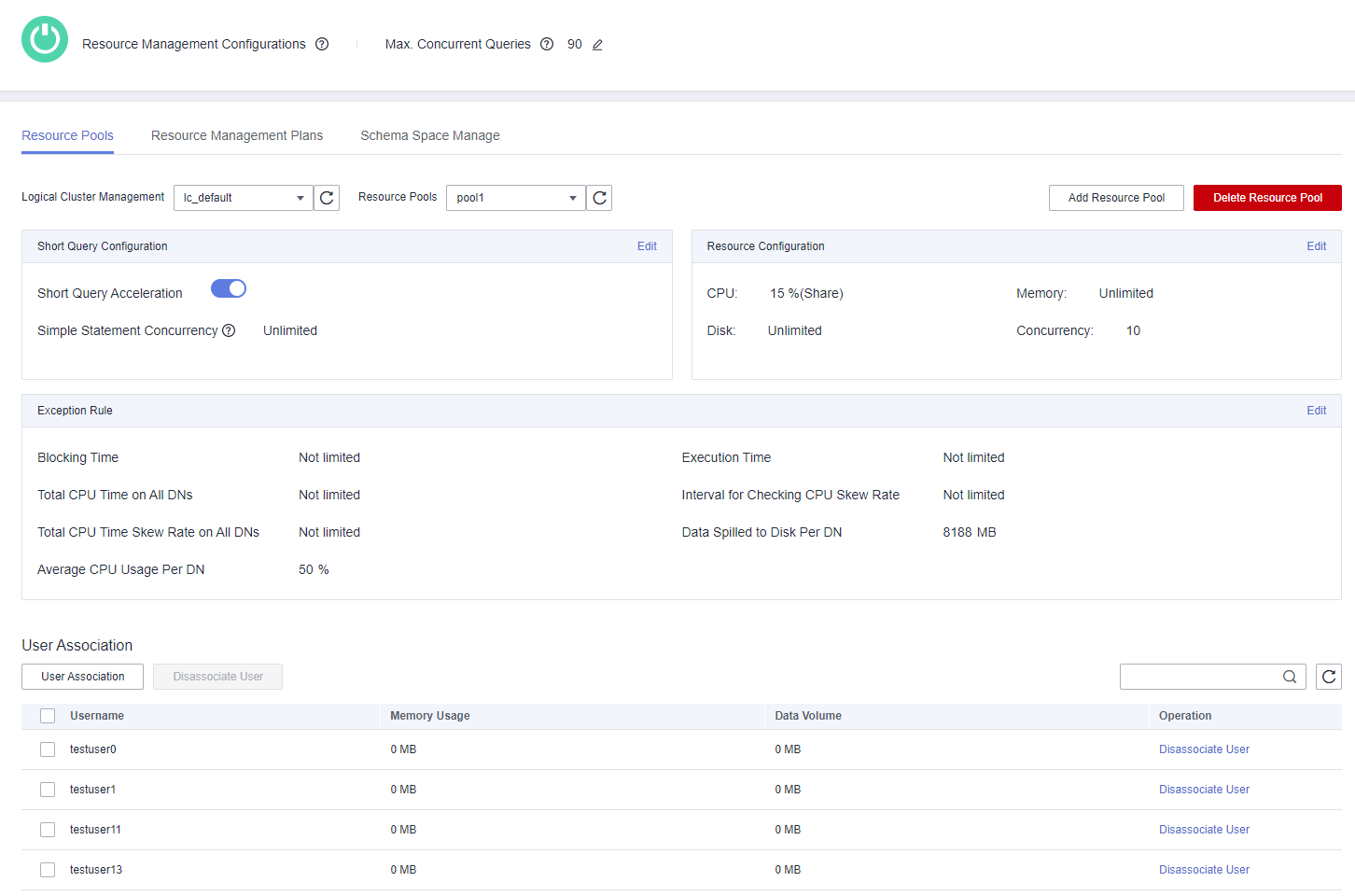Page Overview¶
Overview¶
On the resource management page, you can modify global resource management configurations; add, create, and modify resource queues; add database users to a resource pool; and remove a database user from a resource pool. The page consists of the following modules:

After a cluster is converted into a logical cluster, you can create, modify, or delete a resource pool in the logical cluster.

Enabling or Disabling Resource Management¶
You can enable or disable resource management, and configure the maximum global concurrency. Max. Concurrent Queries refers to the maximum concurrent queries on a single CN. If you disable Resource Management, all resource management functions will be unavailable.

Short Query Configuration¶
In the Short Query Configuration area, you can enable or disable the short query acceleration function. To change the number of simple statements (-1 by default. 0 or -1 indicates that the concurrent short queries are not controlled), you can enable short query acceleration.

Resource Configuration¶
In the Resource Configuration area, you can view the resource configuration of the current workload queue.

Exception Rule¶
In the Exception Rule area, you can view the exception rule settings of the current resource pool. You can configure how job exceptions in the resource pool are handled. For more information, see Exception parameters.

User Association¶
In the User Association list, you can view the associated users of the current resource pool, and the memory and disk usage of each user at the current time, as shown in the following figure.

Note
If no resource pools are associated with a user, the user will be associated with default_pool by default, and its resource usage will be restricted by default_pool. The default_pool will be automatically created after resource management is enabled.